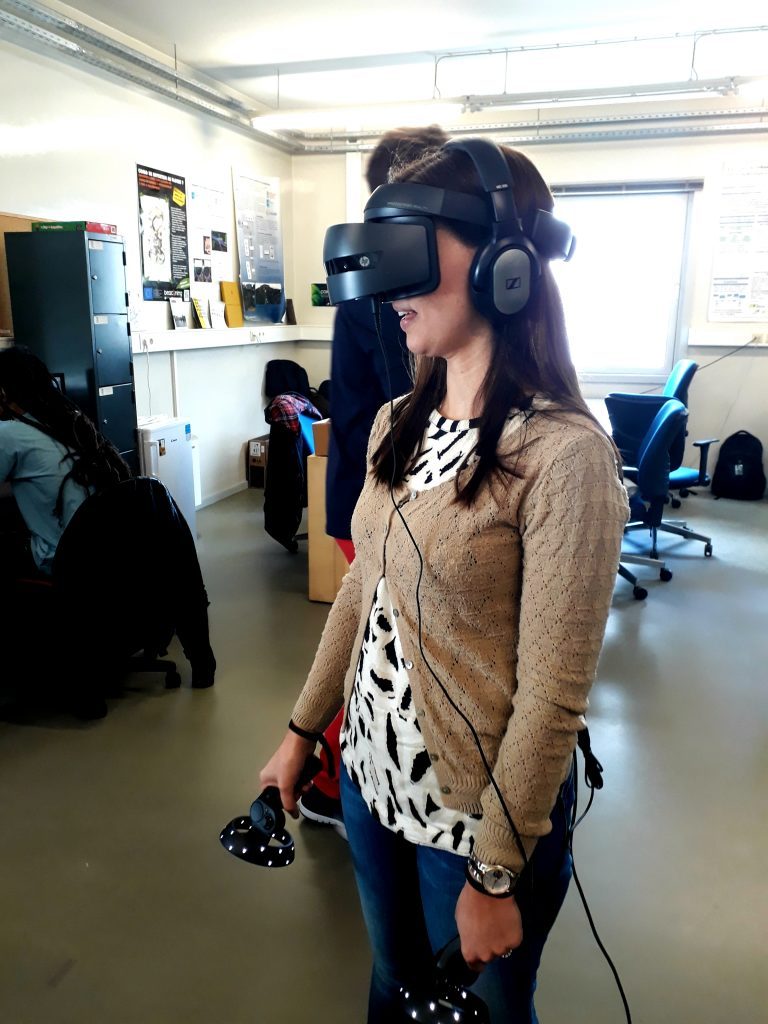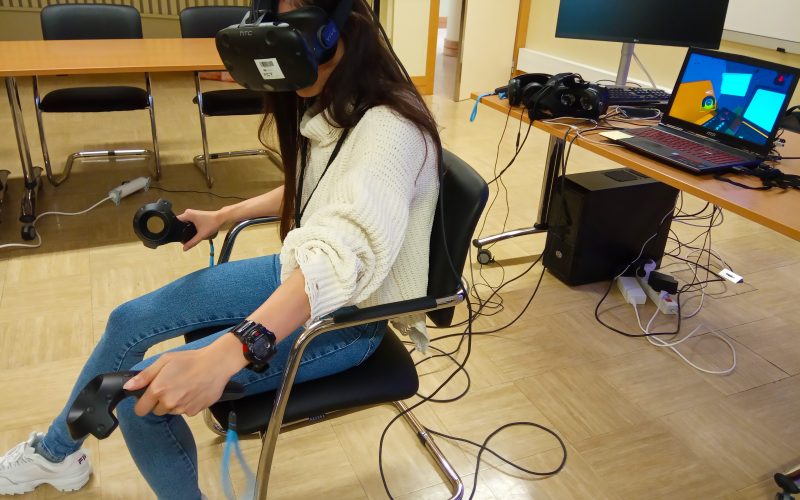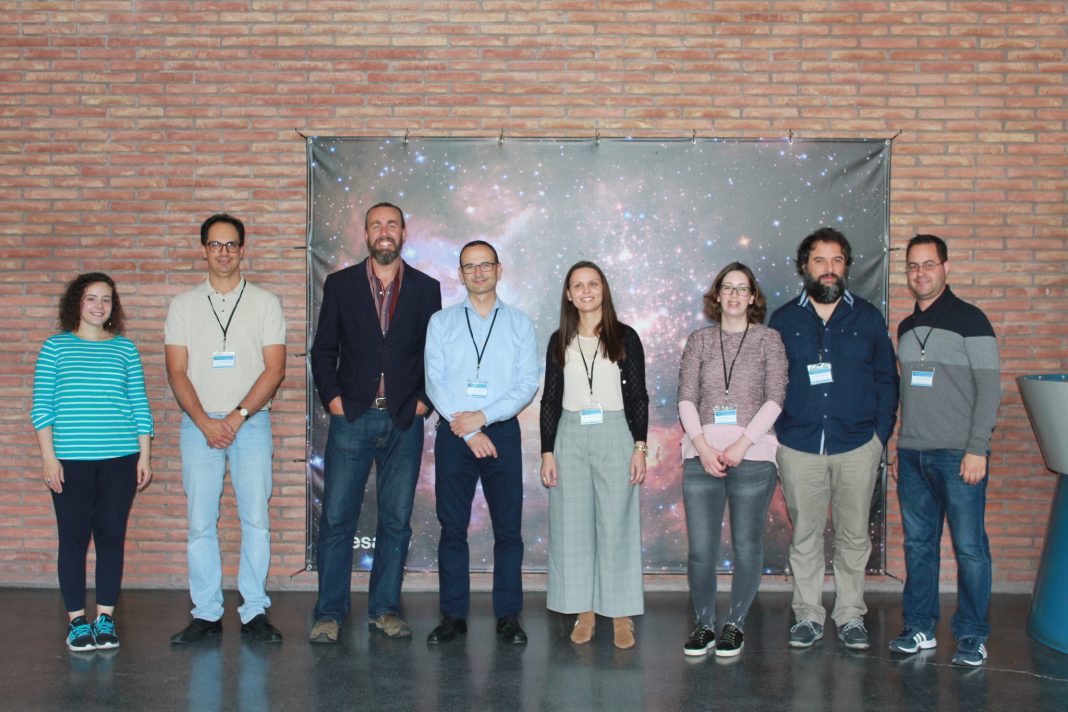I SEA’s project Principal Investigators emphasize “the need of developing more efforts” in order to make the Science Communication field more perceptible to society. Virtual reality (VR) storytelling can be a powerful technology to communicate complex scientific information.
In 2018, FCT awarded funding to 14 Exploratory Research Projects, within the scope of the UT Austin Portugal Program. These short-term exploratory scientific projects aim at developing collaborative research work, involving several institutions and targeting strategic areas of the Program. I SEA addresses matters related to Space-Earth Observations, through digital media exercises.
The project consists of a pilot study of deep-sea ecosystems, using immersive virtual reality environments to understand and evaluate audience’s attitude towards Science Communication projects.
We have recently talked to the principal investigators Carla Morais (Faculty of Sciences of the University of Porto) and Lucy Atkinson (The University of Austin at Texas) about our society’s perspective on science communication and trends such as VR storytelling. The investigators have emphasised the “powerful collaborative team” behind the project and shared some of the challenges they have faced while digging deeper into VR as an enabling technology for communication of complex scientific matters in a graspable way.

The I SEA exploratory research project proposes a method to evaluate audience attitudes towards Science Communication projects, with the intent to carry out pilot studies with a game-based approach. In your opinion, what is the perception society has about the communication of science today?
Within the scope of the I SEA project, we carried out pilot research aiming at strengthening the reflection about “how to communicate and to evaluate cutting-edge knowledge in non-formal contexts.” Through a snowball sampling strategy, nearly 300 adults replied to an online questionnaire. Among other questions and scales, association questions were included in order to explore the social representations related to the main concepts of the project: deep sea (message content), virtual reality (medium used) and science communication (field of study).
Preliminary results suggest that science communication evoked much differentiated ideas, potentially signifying that its social representation is weakly structured. For the researchers, it is a meaningful, relevant, and essential activity, consisting of sharing and communicating scientific knowledge through research papers, conferences, and media. Even though the apparent positive perception that society has about communication of science today, the audience and its role are not very visible in the representation, thus reinforcing the need of developing more efforts to make this field of study more structured and visible. This need is even more pressing given the risks posed by climate change, as well as the necessity to communicate complex scientific information to publics in a comprehensible, actionable way.
This project is a cross-combination of distinctive scientific areas, using Digital Media in order to explore and analyze space and earth interaction matters, embracing the Azores International Research Center’s agenda, specifically, deep-sea ecosystems sustainability. In what way do the participating institutions in Portugal and the University of Texas at Austin complement each other’s work and leverage skills?
This project brings together a powerful collaborative team of researchers and practitioners from Portugal and UT Austin. These individuals represent a diversity of theoretical, methodological, and practical backgrounds, resulting in a strong foundation. The Portuguese institutions have considerable scholarly expertise on science communication practices, and research methods in multimedia, storytelling and digital contents. Moreover, they bring extensive technological and scientific knowledge in developing and piloting innovative virtual reality experiences, as well as serious games and expertise to create and develop the physical capsule, plus digital contents: VRE – I SEA.
The UT Austin’s team provides a supporting role in several areas: contributing to the design of the persuasive messages; bridging the conceptual framework with the empirical plan and analyzing data; and increasing the international visibility and impact of the project. The goal of the research team is to combine the respective topic knowledge and research expertise of an international team of scholars and practitioners in order to generate a collaborative research alliance on issues of effective communication about complex scientific phenomena. Working collaboratively, our aim is to establish an interdisciplinary, long-term cross-cultural research group to tackle pressing issues related to science and sustainability.

One of its goals is to tackle pressing issues related to science, sustainability and climate change. How may the conducted pilot studies influence, for instance, the potential commercialization of emerging technologies?
The results of the previously mentioned research suggest that virtual reality (as an emerging technology) is objectified in specific equipment like headsets and anchored to computers and games, associated with immersion and interactivity. Virtual reality appears to be a promising symbol for the technology of the future. However, the risk mentioned by the participants and the disadvantages presented in the form of illusion, alienation, falsity and addiction, seems to underline the tension between potentialities and threats. The triangulation between these preliminary results and the set of interviews – conducted among stakeholders, staff members, and visitors of the science centers, where the VRE–I SEA will be hosted – highlighted the potential for acceptance of the project’s major technological and communication outcomes.
The commercialization also needs to be considered since we are talking about the following outputs: a collection of digital content and messaging about deep sea ecosystems for science communication; immersive VRE– I SEA as prototypes for other complex science phenomena; and new, replicable non-obtrusive methods for the evaluation of science communication implemented in real world scenarios like science centers and museums. As we see, this emerging technology is still less visible than one can think and its use and implementation in science centers – as we are going to do in the scope of I SEA project – will improve the awareness of its potential for using it in science education and communication contexts, helping people to see how it can be used besides games and cinema. VR storytelling is being successfully adopted by various newspaper outlets and TV stations as a novel way of engaging audiences in journalism storytelling. We expect similar trends in communicating complex scientific information.
What would you consider to be the biggest challenge since starting this venture?
In addition to the foreseeable temporal issue being a challenge in achieving the objectives of this highly complex, highly interdisciplinary and innovative project, there is a need for the permanent articulation of the scientific approach with the technical and design development, also if we consider the construction of the non-invasive evaluation method. Because it is an intricate project, it requires constant iterations and interactions among the team members. So, we’ve learned somehow to consider limitations as engines for developing the project, instead of seeing them as obstacles.

